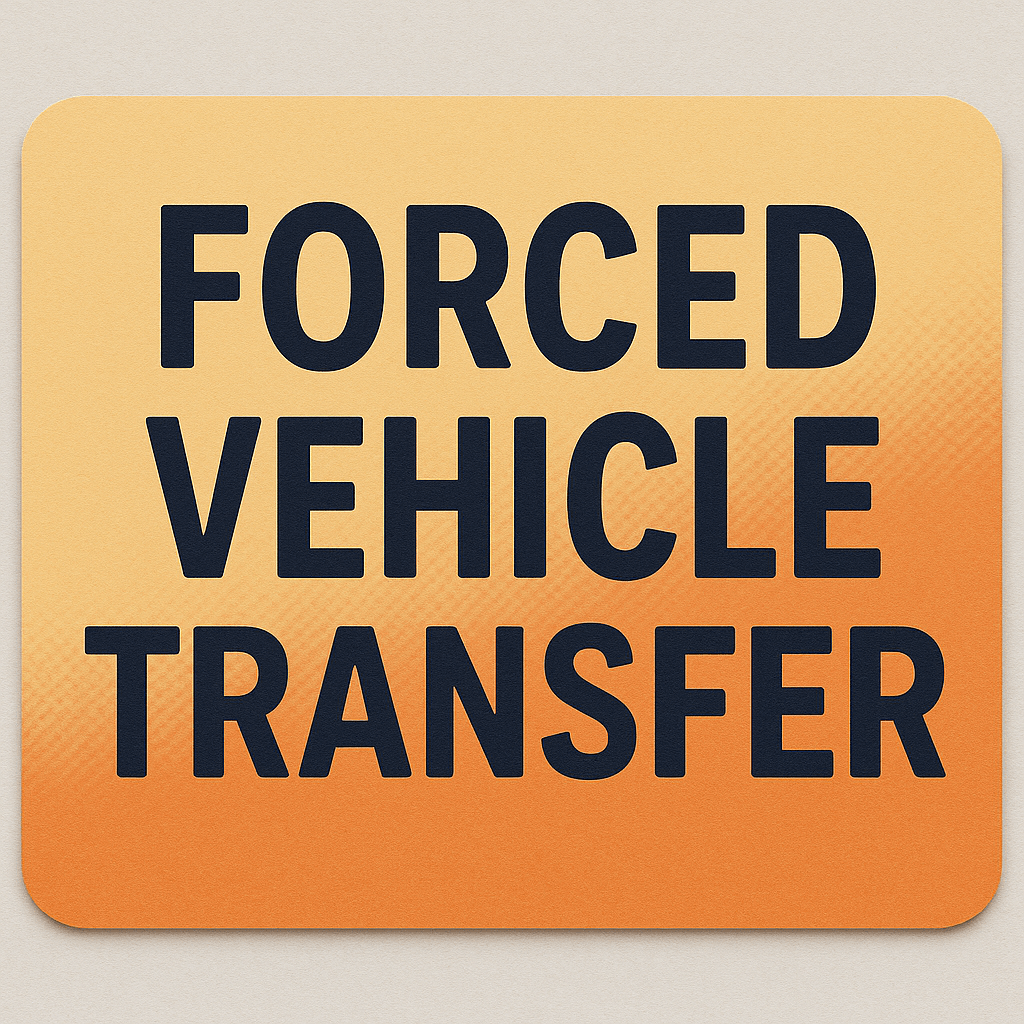How to Do a Forced Car Transfer in Kenya (2025): NTSA Requirements, Steps, and Red Flags

A forced car transfer—also known as an “alternative transfer”—comes in when the seller is unavailable, unreachable, or legally replaced by a court, bank, or public process. If you have bought a repossessed car, inherited a vehicle, or won one at auction, this is your legal pathway to becoming the registered owner.
Here is how the 2025 process works step-by-step, plus what you need to watch out for.
🔍 What Is a Forced Transfer?
A forced transfer happens when normal ownership transfer can’t proceed—because the seller is unreachable, the car was acquired via court or bank repossession, through auction, or inherited. NTSA’s “alternative transfer” process ensures rightful ownership is registered even in these unusual cases.
🧾 Step-by-Step Guide to Forced Transfer
1. Confirm Eligibility
This process applies if:
- The registered owner cannot be traced
- The vehicle was sold via court order, bank repossession, distress auction, or public entity sale
- The vehicle is inherited and the prior holder has passed away
2. Prepare Documentation
You will typically need:
|
Document |
Purpose |
|
Original logbook (or police abstract + Form XI) |
If logbook is missing |
|
Form C |
Official transfer form |
|
Tape-lift report |
Chassis check by DCI to prevent fraud |
|
Sworn affidavit |
From Commissioner or magistrate to confirm circumstances |
|
ID and KRA PIN of old & new owners |
To verify identities |
|
Certificate of sale, court order, auction notice, bank
letters |
As applicable depending on how car was acquired |
3. Initiate via NTSA's E-Citizen/TIMS Portal
- Log into your TIMS account through E‑Citizen.
- Select “Alternative/Forced Transfer” under vehicle services.
- Fill in required fields, categorize the type of forced transfer.
- Upload all documentation as a single PDF.
- Specify a collection center and authorized person details for the logbook.
- Pay the applicable fees—these depend on vehicle CC rating.
- Submit and await NTSA verification & SMS confirmation.
4. Processing Timeline & Cost
- Typical turnaround: 10 working days (may vary with verification).
- Fees scale with engine capacity; larger vehicles cost more.
⚠️ Pitfalls & What to Watch Out For
📌 5 Common Mistakes
- Uploading wrong documents (e.g., blank scan, mismatched logbook)
- Entering incorrect buyer or seller details
- Missing deadlines (use car within 14 days after transfer)
- Inaccurate Form C, tape-lift missing or mis-filed
- Invalid affidavits or insufficient court/auction evidence
🛡️ Fraud Risks & Safeguards
- Tape-lift prevents forged chassis/engine numbers
- Ensure buyer doesn’t jump the 14-day legal window; otherwise, seller remains liable
✅ Tips for a Smooth Transfer
- Prepare everything upfront: forms, affidavits, logs, auction documents
- Be thorough: small errors trip up applications fast
- Track via TIMS/E-Citizen: watch for SMS updates
- Authorize pickup: designating someone avoids delays
- Get legal advice when dealing with courts, estates, or banks
🎯 Final Thoughts
Forced transfers in Kenya might seem complex—but with the right documents, a clear understanding of the NTSA’s portal, and attention to detail, you can navigate it in about 10 business days. The process protects buyers, upholds legal ownership, and prevents fraud.
Remember!
If you need a logbook loan, contact us through our contact form, call us on +254791573231 or visit one of our branches across Nairobi, Kiambu, Machakos, and Kajiado counties to explore your financial options.




Comments ()